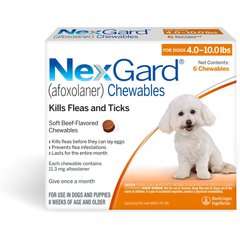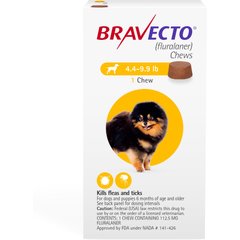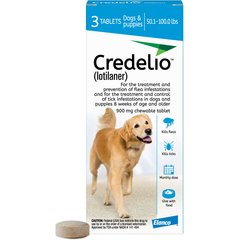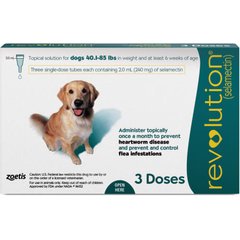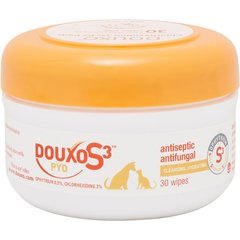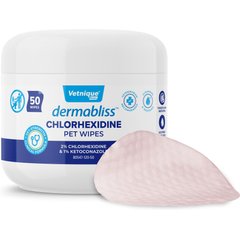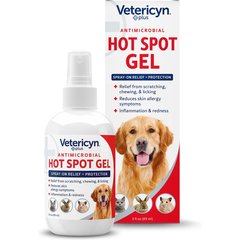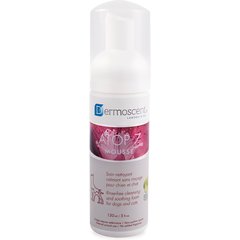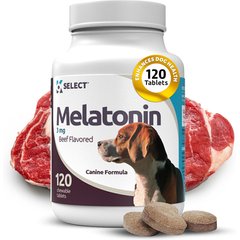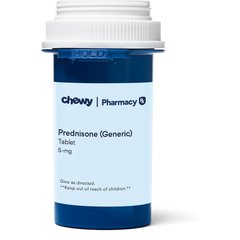10 Most Common Dog Skin Issues: How To Spot, Diagnose, and Treat
Cole_21/iStock / Getty Images Plus via Getty Images
The skin is the largest organ your pup has, and it plays many important roles in keeping them healthy and living their best life.
Many medical conditions can affect your dog’s skin, and dog skin disorders are one of the most common reasons for veterinary visits. Understanding common skin problems in dogs can help you recognize if your dog has a skin issue.
Symptoms of Skin Problems in Dogs
Your dog’s skin should be soft and clear of bumps, scales, or discoloration. Dogs with skin issues commonly display any of the following symptoms:
10 Most Common Dog Skin Disorders
1. Allergies
Allergies are one of the most common conditions affecting the skin in dogs. Dogs can be allergic to fleas, food ingredients, or environmental allergens like pollens, grass, dust, and mold. Often, dogs are allergic to a combination of substances, such as both chicken and pollen. Exposure to allergens causes the dog’s body to release a chemical called histamine that triggers intense itchiness. Allergies can be managed with allergy medications or by avoiding the allergen.
2. Parasites
External parasites are a common cause of dog skin issues. The most common parasites in dogs are fleas, ticks, and mites. Fortunately, most parasites that affect the skin can be prevented with a high-quality prevention product, such as NexGard®, Bravecto®, Credelio™, or Revolution®.
Fleas live on many different animal species, and a single flea can drop hundreds of eggs into the environment in a month. You may see adult fleas or flea feces (flea dirt), which look like small black specks, in your dog’s fur. Some dogs are extremely allergic to flea bites and even a single bite can lead to intense itching, hair loss, and severe self-trauma from scratching.
Ticks attach to a dog and can remain attached for several days while feeding. Ticks can carry many diseases, and if you find a tick on your dog, remove it promptly. Take care to remove the entire tick, including the head.
The most common mites diagnosed in dogs include:
-
Sarcoptes—Sarcoptes mites are contagious and spread easily from dog to dog. They cause hair loss and itching.
-
Demodex—Demodex mites are normally found in the skin, but they can grow out of control in dogs who are immunocompromised, such as young puppies or adult dogs affected by other illnesses. Overgrowth causes hair loss, especially around the eyes and feet.
-
Cheyletiella—Cheyletiella mites look like little white flakes, and they may or may not lead to itchy skin.
3. Bacterial Skin Infections
Skin infections are a common skin disorder in dogs. They are often caused by an overgrowth of normal skin bacteria, which can occur when a dog’s immune system has other issues, such as allergies or an underlying disease. Signs of bacterial skin infections include scaly red patches, small red bumps or pustules, or moist regions of inflamed skin.
Skin infections can also occur when bacteria that are not part of the normal skin flora enter the skin through a small scrape or puncture. Bacterial skin infections are usually treated with oral antibiotics or medicated shampoos like KetoChlor® and Douxo®.
4. Hot Spots
Hot spots are regions of moist, red, inflamed skin that can seemingly develop overnight. They are the result of an underlying allergy that causes intense itchiness and occur when a dog rubs, scratches, licks, or chews an area until a hairless wound develops. Hot spots are sensitive to the touch and can be painful. They are usually treated with antibiotics and anti-itch medications. In addition to a medication, an OTC spray such as Vetericyn® Plus Antimicrobial may be recommended to help provide relief.
5. Yeast Infections
Yeast skin infections are caused by an overgrowth of yeast organisms on the skin. They cause a distinct musky odor and itchy skin. Chronic yeast overgrowth can cause hyperpigmentation, or darker skin, on the belly, groin, and armpits. Black debris may also accumulate at the base of the nail beds. Yeast skin infections are usually treated with oral or topical antifungal medications.
6. Ringworm
Despite its name, ringworm is caused by a fungus rather than a worm. The condition got its name from the characteristic round, red ring that it often causes in people.
In dogs, ringworm causes a localized skin infection characterized by hair loss and scaly skin that may be itchy. Ringworm is zoonotic, meaning it can be spread from animals to humans. Ringworm is treated with topical and oral antifungal medications.
7. Dry Skin
Dry skin in dogs, which can be accompanied by dander (flakiness), has many causes. Dry skin can be a normal puppy skin condition in pups who haven’t yet developed the oil glands that keep their coat shiny. Dry weather is a common cause of dry skin; however, dry skin can also indicate inadequate nutrition or an underlying disease. Treatments for dry skin include moisturizing leave-on products, or oral omega-3 fatty acid skin supplements.
8. Alopecia
Alopecia, or hair loss, can develop as a complication of many underlying conditions, including:
-
Allergies
-
External parasites
-
Drug reactions
-
Skin infections
-
Genetic diseases
If your dog develops hair loss without signs of a skin infection or parasites, your veterinarian may recommend blood work to test for underlying diseases.
Some dogs experience a type of hair loss called alopecia X. This is a genetic disease that is more common in breeds with dense undercoats like Pomeranians, Chow Chows, and Alaskan Malamutes. Affected dogs develop hair loss without skin inflammation. Alopecia X in male dogs may improve when they are neutered, and melatonin may be helpful in some cases.
9. Skin Cancer
Skin cancer can lead to hair loss, scabs, oozing lesions, and lumps or bumps on the skin. While some types of skin cancer cause obvious masses, other types cause more subtle signs.
Any non-healing wounds or discolored regions on your dog’s skin should be examined by your veterinarian. Skin cancer is often diagnosed with a biopsy and may be treated with surgery, radiation, or chemotherapy.
10. Autoimmune Disease
Autoimmune diseases occur when a dog’s immune system attacks normal body cells or tissue. Autoimmune diseases are usually inherited, but onset can sometimes be triggered by a drug reaction.
Examples of autoimmune diseases in dogs include pemphigus and lupus, and signs commonly include crusting lesions and hair loss along the bridge of the nose and on the face.
Dogs with autoimmune diseases are often treated with immunosuppressive doses of prednisone or cyclosporine, but treatment will depend on which disease your dog has. Your veterinarian may also recommend avoiding extensive sun exposure.

